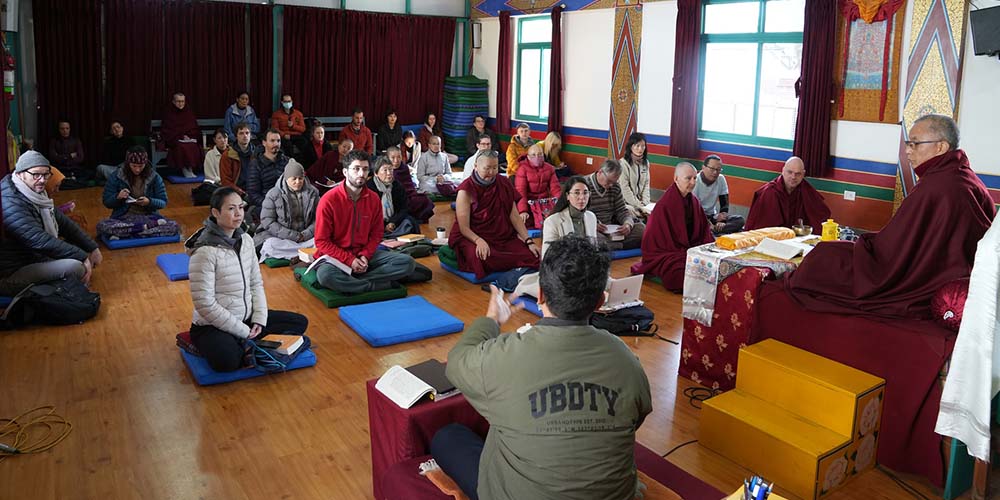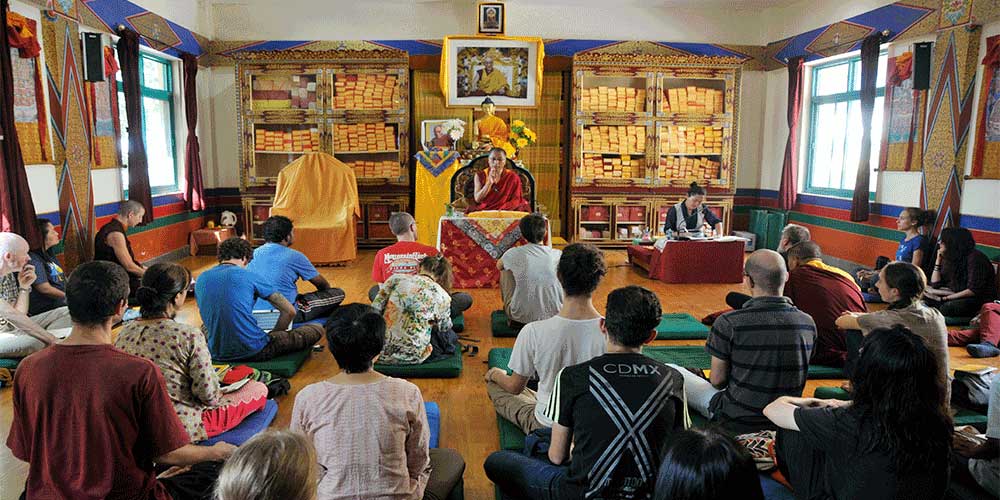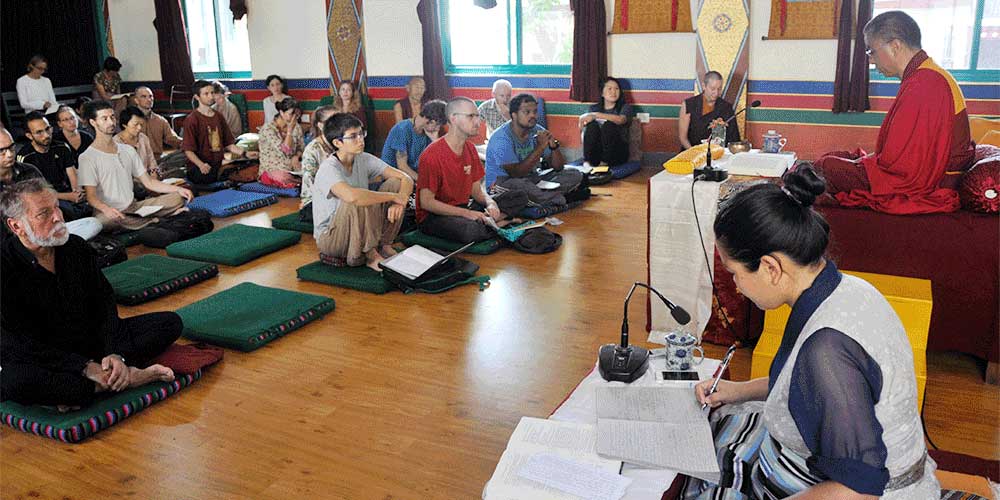First Buddhist Philosophy Class
Time: 9:00 to 10:15 am
Teacher: Geshe Gyaltsen Tsering
Text: The Essence of the Stages of Path ( Wylie: stag bu yong ‘dzin ye shes rgya mtshos mdzd pa’i byang chub lam rim chen mo’i sa bcad kyi thog nas skyes bu gsum gyi lam gyi rim pa’i man ngag gi gnad bsdus gsal ba’i sgron me)
11 March – 12 December
The textbook for this year’s class with Geshe Gyaltsen-la is The Essence of the Stages of Path authored by Takbhu Yongzin Yeshi Gyatso. Based on Je Tsongkhapa’s Great Treatise on the Stages of Path to Enlightenment, this Lamrim text deals with the stages of path to enlightenment in simple and accessible way to fulfil the needs of people who are new to Buddhist teachings.
The text outlines a progressive path that is tailored to different levels of understanding and capacities. By categorizing individuals into three main types called Three Individuals (skye bug sum) based on capacity – person of small capacity, person of medium capacity and person of great capacity – it teaches that the spiritual journey is gradual, and practitioners should approach their practice according to their current level of development. It explains that the path is not one-size-fits-all; different practitioners have different goals, aspirations, and abilities. It further asserts that the gradual progression helps individuals understand where they are on the path and how to move forward with clarity.
This Lamrim text has offered flexible methods for different levels of aspiration: For those at the initial capacity, the emphasis might be on achieving a better rebirth and cultivating basic virtue to escape suffering. For those at the medium capacity, the focus will shift to liberating oneself from samsara through the practices of meditation, ethical conduct, and wisdom. For those at the great capacity, the goal becomes bodhicitta and the aspiration to attain Buddhahood in order to help all sentient beings achieve freedom from suffering.
This distinction is essential because the Lamrim shows how practitioners can structure their practice according to their personal goals, leading to greater effectiveness in their spiritual development.
Recommended text:
- Je Tsonkhapa’s Middle-Length Treatise on the Stages of Path to Enlightenment (Tib. Wylie: byang chub lam rim ’bring, phonetics: jang chub lam rim dring)
- Essence of Superfine Gold: A Guide on the Stages on the Path of Enlightenment, by the 3rd Dalai Lama, translated by Dr Chok Tenzin Monlam, LTWA.
- Teachings on Je Tsongkhapa’s Three Principal Aspects of the Path, with commentary by the 14th Dalai Lama, LTWA.
 Library of Tibetan Works and Archives The Library of Tibetan Works and Archives is a Tibetan library in Dharamshala, India.
Library of Tibetan Works and Archives The Library of Tibetan Works and Archives is a Tibetan library in Dharamshala, India.




